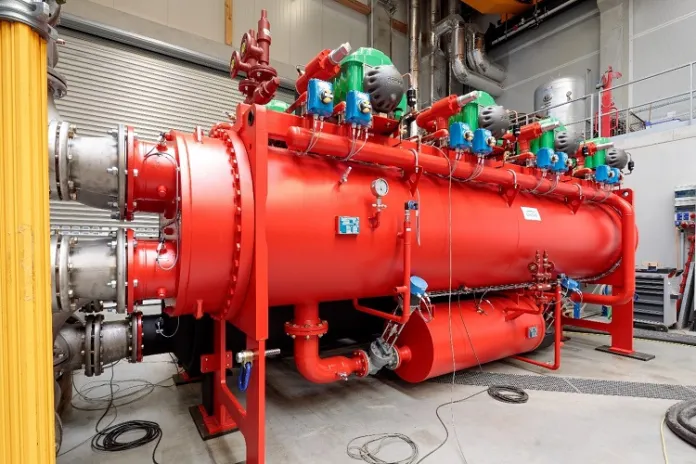Eco-Friendly Refrigerants for Industrial Chillers
Introduction
Eco-Friendly Refrigerants are rapidly becoming a vital component in the quest for sustainable cooling solutions. As industries move away from traditional refrigerants that harm the environment, these green alternatives offer lower global warming potential (GWP) and zero ozone depletion potential (ODP). Eco-friendly refrigerants, including natural options like ammonia and carbon dioxide, as well as newer synthetic alternatives like HFOs, are setting a new standard in industrial and commercial cooling systems.
Types of Eco-Friendly Refrigerants
- Hydrofluoroolefins (HFOs):
- HFOs are synthetic refrigerants designed as a sustainable replacement for hydrofluorocarbons (HFCs), offering a much lower global warming potential (GWP).
- They are non-ozone-depleting and chemically stable, making them a top choice for newer, eco-friendly cooling systems.
- Common HFO refrigerants include R1234yf and R1234ze, used in both industrial and commercial applications.
- Natural Refrigerants:
- Ammonia (R717): A widely used refrigerant in industrial systems, ammonia has excellent thermal properties and zero GWP. It’s highly efficient, though it requires careful handling due to toxicity.
- Carbon Dioxide (CO₂ or R744): With an ultra-low GWP, CO₂ is a leading natural refrigerant in many industries, especially in cascade systems or industrial chillers.
- Hydrocarbons (HCs): Propane (R290) and isobutane (R600a) are hydrocarbons that are not only energy-efficient but also environmentally benign with low GWP. They are common in smaller systems but need proper safety measures due to flammability.
- Water (R718):
- Water is considered the most eco-friendly refrigerant, with zero GWP and ODP. While not widely used in traditional chiller systems, it is gaining interest for its potential in certain large-scale or specialized industrial cooling applications.
Key Drivers for Eco-Friendly Refrigerant
- Regulatory Pressures:
- Global agreements like the Montreal Protocol and its Kigali Amendment are phasing out harmful refrigerants, particularly HFCs. Industries are transitioning to refrigerants with lower GWP to comply with these regulations.
- National-level legislation across many countries enforces strict guidelines on refrigerant usage, making eco-friendly options essential for companies to stay compliant.
- Environmental Concerns:
- The impact of refrigerants on climate change is a growing concern, especially as traditional HFCs and CFCs contribute significantly to global warming and ozone depletion. Using refrigerants with minimal environmental impact is critical to reducing the industrial carbon footprint.
- Eco-friendly refrigerants are a major step toward achieving sustainability goals, helping industries reduce greenhouse gas emissions.
- Energy Efficiency:
- Many eco-friendly refrigerants, such as ammonia and hydrocarbons, have superior thermodynamic properties, resulting in more efficient cooling. This not only reduces the environmental impact but also lowers operating costs for industrial facilities.
- High energy efficiency combined with a lower carbon footprint makes these refrigerants an attractive choice for companies looking to optimize both environmental and financial performance.
- Corporate Sustainability and Consumer Demand:
- As companies place a stronger emphasis on sustainability, adopting eco-friendly refrigerants aligns with corporate social responsibility (CSR) initiatives. Consumers and investors are increasingly favoring businesses that demonstrate environmental stewardship.
- Industries are motivated to innovate with greener technologies to maintain competitive advantage and meet growing consumer expectations for environmentally responsible products.
Challenges in Implementation
- Initial Costs: Retrofitting or replacing older systems with new refrigerants can have high upfront costs, particularly for large industrial setups.
- Safety Concerns: Some natural refrigerants, such as ammonia and hydrocarbons, pose flammability or toxicity risks. Safe handling and system design are critical.
- System Compatibility: Not all systems are immediately compatible with eco-friendly refrigerants, requiring significant modifications or entirely new equipment.
Conclusion
As the industrial refrigeration sector embraces sustainability, the adoption of eco-friendly refrigerants in chillers is expected to accelerate. With a clear shift towards natural and HFO-based refrigerants, industries can not only meet regulatory requirements but also enjoy long-term cost savings through enhanced energy efficiency.






